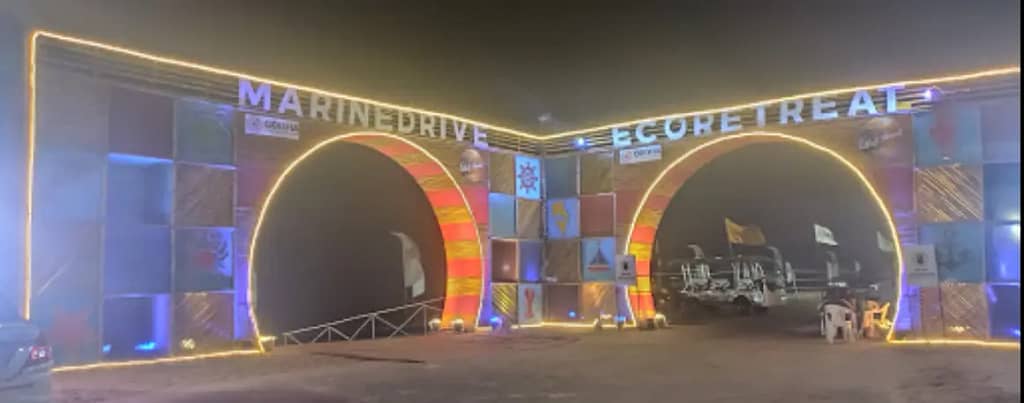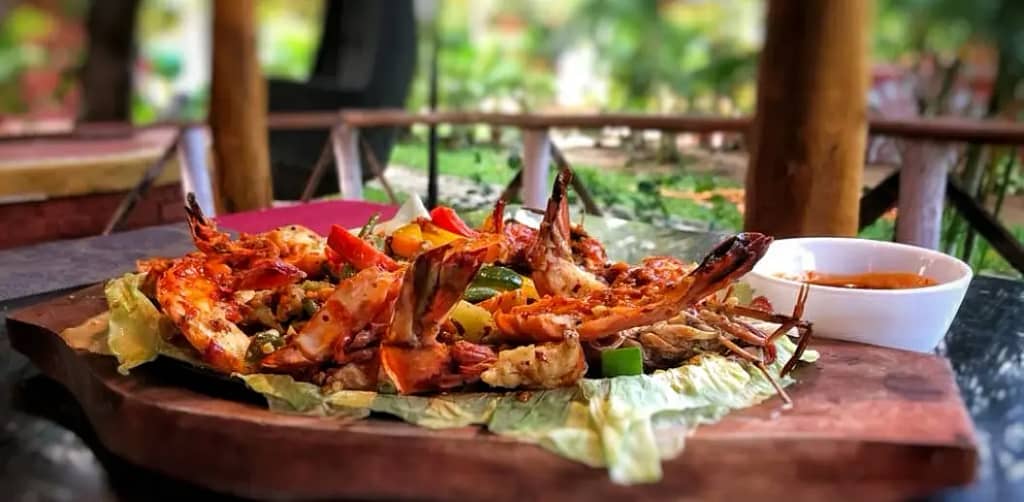Table of Contents
The Odisha Konark Temple, also known as the Sun Temple, is an architectural masterpiece dating back to the 13th century. Situated in the coastal Puri district of Odisha, India, this UNESCO World Heritage Site attracts visitors from around the world for its rich history, intricate designs, and cultural significance.
Historical Significance
Constructed around 1250 CE by King Narasingha Deva I of the Eastern Ganga dynasty, the temple was dedicated to Surya, the Hindu Sun God. It originally stood at a towering height of 200 feet (61 meters), but much of the structure is now in ruins. Today, the remaining 100-foot-high (30-meter) portion of the temple reflects its former grandeur.
The temple, often referred to as Surya Devalaya, exemplifies the Odisha style of architecture, commonly called Kalinga architecture. Its detailed carvings and symbolic motifs, including depictions of kama (desire) and mithuna (union), remain celebrated worldwide.
Location and Accessibility
The Odisha Konark Temple is located in the village of NAC Area, about 35 km (22 miles) northeast of Puri and 65 km (40 miles) southeast of Bhubaneswar. Positioned along the Bay of Bengal, the site is accessible via:
- Biju Patnaik Airport, Bhubaneswar – the nearest major airport.
- Indian Railways connecting Bhubaneswar and Puri.
Architectural Splendor
The Chariot Design
The temple was designed to resemble a colossal chariot of Surya, drawn by seven horses and equipped with 24 intricately carved stone wheels. These wheels, each about 12 feet (3.7 meters) in diameter, represent the Hindu calendar, with two cycles for each of the twelve months.
At sunrise, the temple appears as if it is emerging from the ocean, symbolizing Surya’s celestial journey.

The Mandala Layout
The layout follows traditional Hindu temple architecture, with a square design and precise geometric principles as per Odisha’s ancient texts, such as the Silpa Sastra.
Key structures include:
- Rekha Deul (Main Shrine) – The original towering sanctuary.
- Bhadra Deul (Mandapa) – A large assembly hall with a conical roof.
- Nata Mandira (Dance Hall) – A beautifully carved structure used for performances.
Materials and Craftsmanship
Three types of stones were used in its construction:
- Chromite for door sills and frames.
- Laterite for steps and platforms.
- Khondalite for other sections, though its susceptibility to weathering has contributed to the temple’s gradual deterioration.
The temple’s intricate carvings reflect Odisha’s rich artistic traditions, including scenes of musicians, dancers, and mythological stories.

Cultural and Historical Challenges
The temple’s fate has been a topic of debate. Historical accounts suggest multiple causes for its destruction, including natural disasters and invasions by Muslim troops during the 15th and 17th centuries.
In 1676, European sailors documented the temple and referred to it as the “Black Pagoda” due to its dark appearance and utility as a navigational landmark in the Bay of Bengal. Restoration efforts during British rule salvaged parts of the temple that are visible today.
The Odisha Konark Temple in Modern Times
The Konark Sun Temple holds immense cultural significance, symbolized by its depiction on the reverse side of India’s ₹10 currency note. Every February, the temple becomes a hub of activity as devotees gather for the Chandrabhaga Mela, a celebration in honor of the Sun God.
Sculpture and Relief Forms
The Odisha Konark Temple, celebrated for its intricate carvings, is a masterpiece of Indian temple architecture. Each chariot wheel of the temple stands as a marvel of craftsmanship, with detailed carvings that narrate stories and symbolize the passage of time. Among the sculptures, there is an enchanting portrayal of a flute performer and a charming young lady, showcasing the artistic finesse of the era.
The temple walls are adorned with reliefs stretching from the base to the pinnacle, depicting scenes of daily life, culture, Hindu deities, apsaras, animals, birds, and mythical creatures. These carvings often resemble jewelry due to their minute details. Musicians, depicted playing instruments such as the vina, mardala, and gini, add a rhythmic charm to the temple’s visual narrative.
Scenes from Daily Life and Culture
The temple features vivid friezes on its platform’s base, depicting:
- Secular Scenes: Hunting, caravans with domesticated animals, bullock carts, roadside cooking, and processions.
- Daily Life: Girls drying their hair, applying makeup, playing with pets, and elders preparing for pilgrimages.
- Symbolic Depictions: Panels showing a king seeking advice from a guru, symbolizing humility by portraying the guru larger than the king.
Erotic Sculptures and Tantric Symbolism
The erotic sculptures at Konark Temple are renowned for their explicit depictions of romance and intimacy. These carvings, which align with Kamasutra’s bandhas (mudra forms), sparked both admiration and controversy during the colonial era. While some interpret these as representations of left-hand tantra traditions, they are widely accepted as artistic explorations of human life and kama (desire).
Monumental Entrances and Statues
The temple complex features monumental statues of horses, lions subduing elephants, and elephants defeating demons. The iconic Aruna Stambha, a monolithic chlorite pillar dedicated to Surya’s charioteer, once stood at the temple’s eastern staircase. It now resides at the Jagannatha Temple in Puri.
Hindu Deities Depicted in Art
Sculptures of Hindu gods and mythological narratives dominate the Konark Temple. Notable depictions include:
- Vaishnavism: Vishnu in his Jagannatha form.
- Shaivism: Damaged Shiva lingas.
- Durga: Slaying the buffalo demon.
- Vedic Deities: Indra, Agni, Kubera, and Varuna appear prominently on the jagamohana and chariot wheels.
Architectural Style and Sundials
Built in traditional Kalinga architectural style, the Konark Temple is designed to catch the first rays of the sun, symbolizing its dedication to the Sun God. Constructed from Khondalite rocks, the temple’s wheels function as precise sundials, capable of measuring time to the minute.
Other Monuments within the Complex
- Mayadevi Temple: Predating the main temple, this shrine features sculptures of Surya and other deities.
- Vaishnava Temple: Unearthed in 1956, it features depictions of Balarama, Varaha, and Vamana-Trivikrama.
- Kitchen Complex: Found south of the feeding hall, it includes triple ovens, drainage systems, and grain-crushing pits.
- Two Wells: These historical water sources supported cooking and pilgrim activities.
Preservation and Rediscovery
The temple was in ruins by the 18th century due to natural disasters, attacks, or abandonment. The Aruna Stambha was relocated during the Maratha period, and systematic conservation began in the 19th century. UNESCO designated the Konark Temple a World Heritage Site in 1984, ensuring its preservation for future generations.
Cultural Significance and Literature
The Konark Temple remains an iconic symbol of Odia culture and a cornerstone of the Golden Triangle alongside the Jagannath Temple in Puri and the Lingaraja Temple in Bhubaneswar. It has inspired numerous works of art and literature, including poetry, novels, and stories like Rabindranath Tagore’s praise for its “language of stone” and Jhumpa Lahiri’s narrative in Interpreter of Maladies.
Travel and Leasure at the Konark temple
The Konark Dance Festival, held annually from December 1st to 5th, is one of the most prestigious classical dance festivals in India. Set against the stunning backdrop of the Sun Temple, the open-air theatre comes alive with performances by maestros, transporting the audience back to the glorious days of the Konark Sun Temple.
The Chandrabhaga Mela, held every January, attracts thousands of devotees who gather to take a dip in the sea and offer prayers to the Sun God, making it a significant spiritual event.
A wide range of accommodation options awaits you! Whether you prefer luxurious star-rated hotels, eco-tour nature camps featuring state-of-the-art Swiss tents, OTDC government hotels, cozy bed-and-breakfasts, or charming homestays, there’s something for everyone. Browse the list below to find your ideal stay.
Eco Retreat Konark
Location: Ramachandi Beach, Konark
Accommodation Options:
- Presidential Luxury Swiss Cottage Tents
- Premium Swiss Cottage Tents
- Deluxe Swiss Cottage Tents

WildDunes Konark
Location: Puri-Konark Marine Dr, Ramachandi, Balukhand, Konark, Balukhand, Odisha 752111




